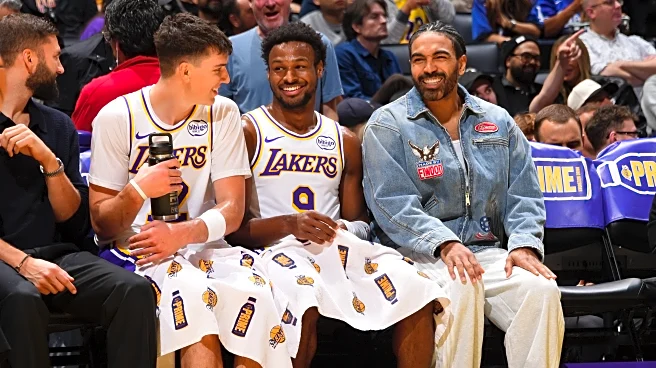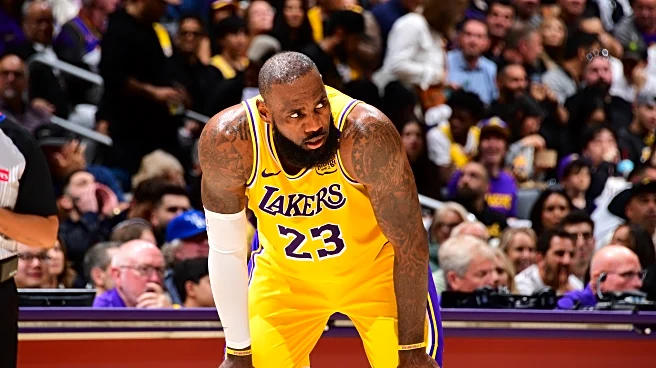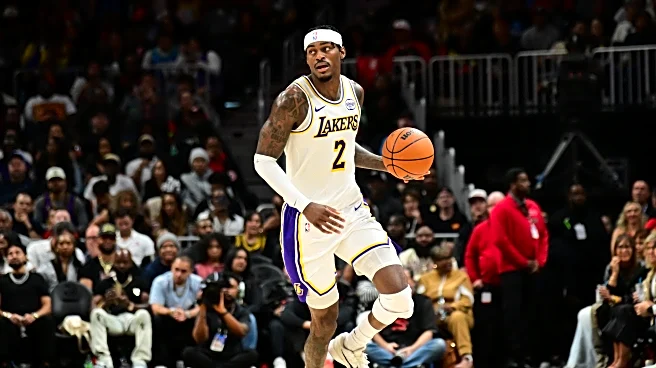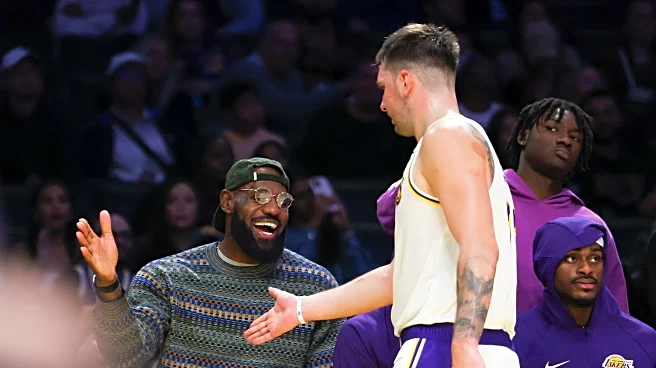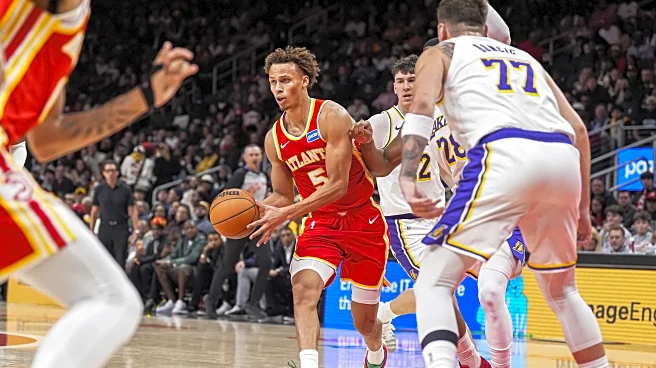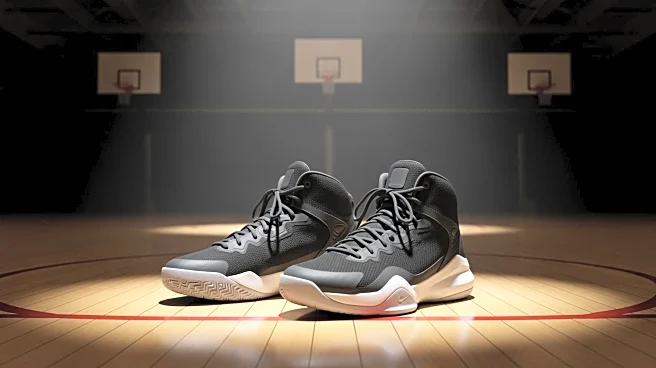What's Happening?
LeBron James, the star player for the Los Angeles Lakers, is approaching a return to the court after missing the opening weeks of the NBA season due to a sciatica injury. Sciatica, which involves nerve compression in the lower spine, has kept James sidelined,
but he is now practicing with the G League's South Bay Lakers to ramp up his basketball activities. The Lakers have not provided an exact timeline for his return, but reports suggest he could be back as early as November 18 for the Lakers' home game against the Utah Jazz. James was initially ruled out for the first couple of weeks of the season, and while he is not expected to play during the current road trip ending November 15, his return is anticipated soon.
Why It's Important?
LeBron James' return is significant for the Lakers as they navigate the competitive Western Conference. Despite his absence, the team has managed to perform well, with players like Austin Reaves stepping up. James' presence on the court is crucial for the Lakers' strategy and depth, especially as they aim to contend for the championship. His recovery from sciatica, which typically involves rest, anti-inflammatory medications, and physical therapy, is closely watched by fans and analysts alike. The Lakers' decision on when to bring him back could impact their performance in upcoming games and their overall season trajectory.
What's Next?
The Lakers are considering their options regarding James' return, with the possibility of giving him additional time to recover by sitting him out of the November 18 game. The team has an extended break after this matchup, which could allow James more time to ramp up his activities. The decision will likely depend on his progress in practice and the team's assessment of his readiness. As James continues to practice, the Lakers will monitor his condition closely to ensure he returns at full strength, minimizing the risk of re-injury.
Beyond the Headlines
LeBron James' injury and recovery highlight the challenges athletes face with conditions like sciatica, which can significantly impact performance. The Lakers' management of his return reflects broader considerations in sports medicine and athlete care, emphasizing the importance of strategic recovery plans. This situation also underscores the role of team depth and adaptability in maintaining competitive performance during key player absences.


